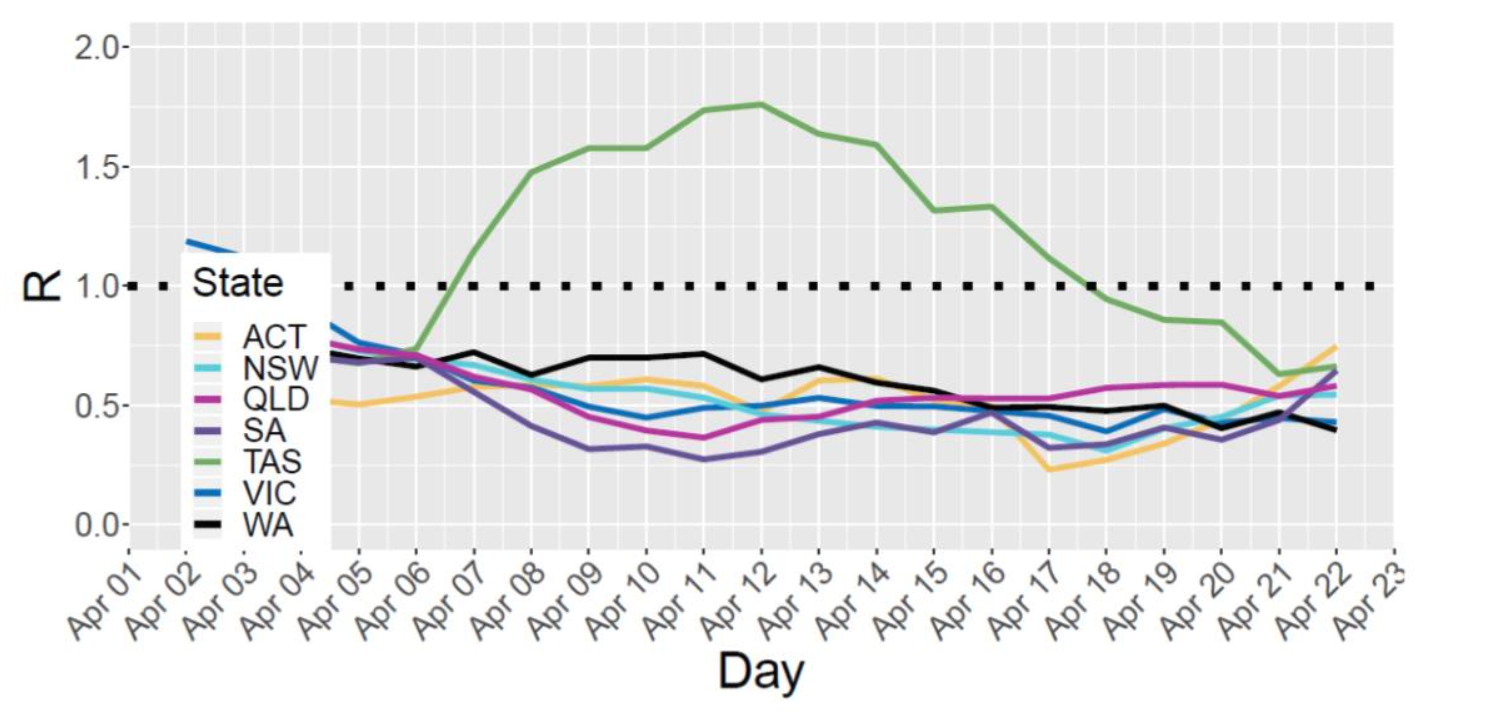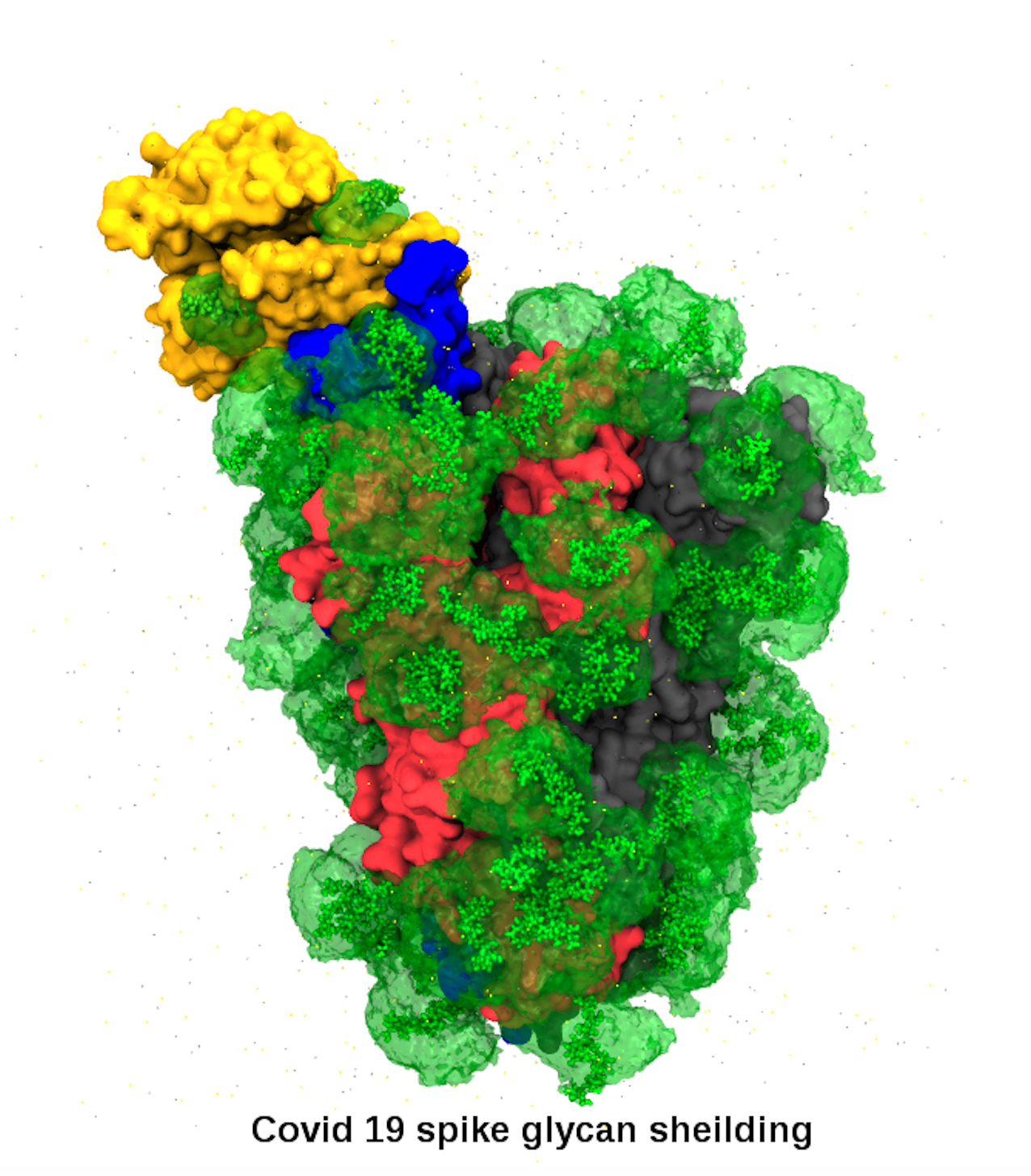The current landscape
Coronavirus (COVID-19) has disrupted economies, markets, supply chains, industries, different parts of the workforce and many aspects of society.
We’re working with government and industry partners to help understand how the virus behaves to inform vaccine development, model scenarios to inform decision making, understand sentiment, safeguard privacy and security and automate for greater efficiencies.
These are our capabilities and some key projects.
Our capabilities
- Broad and deep analytics capabilities (for example, analysing large unstructured data sets)
- Risk modelling (modelling millions of scenarios and make decisions based on risk)
- Social media analysis (NLP) and sentiment analysis (tracking the spread of virus, understanding community sentiment)
- Privacy preserving technologies (enhancing data sharing between entities, such as different jurisdictions and between agencies)
- Data sharing (including blockchain, geospatial mapping)
- AI/Machine learning (including reviewing lung images to detect COVID-19 for asymptomatic people)
- Computer vision/AR/VR (3D heat-mapping of virus contamination on surfaces)
Our work
Modelling the infection rate of COVID-19
Data61 researchers are tracking the reproduction rate R (transmission) of coronavirus in Australia and across the states helping to inform federal and state governments on the spread and containment of the disease.
The R0 rate is used in the study of diseases to measure how many people a single person will pass the disease on to. The higher the number, the more people are infected – resulting in cases rapidly increasing, surging to peaks experienced in countries such as Italy, Spain and the US.

Detecting and preventing the spread of misinformation
Misinformation can spread quickly in online environments causing confusion and a lack of trust in experts and institutions. Our research analyses Twitter data to identify the most prevalent themes of misinformation currently being spread in relation to COVID-19 and the most common sources of misinformation.
The information can be used to act as an early alert system of emerging crises for first responders, emergency services or government decision makers.
Using 3D modelling and virtual reality to understand SARS-COV-2
Our data scientists are using computer modelling to generate an accurate replica of COVID-19 to identify regions of its proteins that could be successful targets for treatment drugs and vaccines.
These 3D models are animated to better understand how parts of the virus behave and interact with healthy cells, and can be shared via virtual reality (VR) to enable a collaborative and interactive working session.
These VR and simulation capabilities have enabled our scientists to understand vital intricacies of the virus, such as why the interaction between the invading and host protein is so strong, an accomplishment static 2D modelling would be unable to provide in the limited time frame.
Being able to explore the internal structure of a molecule is key not only to designing a successful drug, but also minimising the costly development process, allowing scientists to prioritise which drug compounds could be the most successful when made in the lab. This has the potential to drastically reduce the time this process would take.
3D printing of personal protective equipment (PPE)
Researchers from our robotics and autonomous systems team are using 3D printers to produce two designs of protective face shields for Queensland healthcare workers as part of a state-wide collaborative effort between community, research and industry groups.
So far, 200 units have been produced by Data61 within two weeks, and a further 300 are being made currently – contributing towards a collective 3,000-5,000 masks.
Supporting Aussie manufacturing of COVID-19 face masks
Providing a picture of mental wellbeing

Designed in 2014 by CSIRO’s Data61 in collaboration with the Black Dog Institute and Amazon Web Services, WeFeel analyses the words from millions of tweets to display a real-time view of users’ emotions.
It provides valuable insights on how a population’s emotions fluctuate over time due to changes in social, economic and environmental factors such as weather, time of day, news of a natural disaster or announcements about the economy.
The valuable information provided by the platform can help organisations plan a quick response in terms of resource allocation when there is a notable increase in emotions that could impact people’s mental health.
Insights gathered by WeFeel in 2020
Monitoring businesses, skills and supply chains
To maximise the resilience of Australia’s labour market during COVID-19, we have created a Skills Dashboard to analyse a national database of job ads to better understand how and why the demand for workers and skills are changing.
Insights extracted from job ad data provided by Adzuna were extracted by our Inclusive Socio-Technical Innovation team before being analysed by the Strategic Insights team to predict emerging trends, drivers and scenarios, and insights to inform future strategy and policy decisions.

Data61 Australian skills dashboard
Work with us
We can help you understand where your opportunities and vulnerabilities lie as an organisation and at an industry level in a post COVID-19 world.
Data61 has the largest team of data scientists and engineers in the country, and as part of the national science agency, the deep domain expertise across industries from health and biosecurity, agriculture and food, to manufacturing.
We can apply the intellectual horsepower and technical solutions to help your organisation innovate amidst the uncertainty and into the future.
Find out about more COVID-19 work happening across CSIRO
The current landscape
Coronavirus (COVID-19) has disrupted economies, markets, supply chains, industries, different parts of the workforce and many aspects of society.
We’re working with government and industry partners to help understand how the virus behaves to inform vaccine development, model scenarios to inform decision making, understand sentiment, safeguard privacy and security and automate for greater efficiencies.
These are our capabilities and some key projects.
Our capabilities
- Broad and deep analytics capabilities (for example, analysing large unstructured data sets)
- Risk modelling (modelling millions of scenarios and make decisions based on risk)
- Social media analysis (NLP) and sentiment analysis (tracking the spread of virus, understanding community sentiment)
- Privacy preserving technologies (enhancing data sharing between entities, such as different jurisdictions and between agencies)
- Data sharing (including blockchain, geospatial mapping)
- AI/Machine learning (including reviewing lung images to detect COVID-19 for asymptomatic people)
- Computer vision/AR/VR (3D heat-mapping of virus contamination on surfaces)
Our work
Modelling the infection rate of COVID-19
Data61 researchers are tracking the reproduction rate R (transmission) of coronavirus in Australia and across the states helping to inform federal and state governments on the spread and containment of the disease.
The R0 rate is used in the study of diseases to measure how many people a single person will pass the disease on to. The higher the number, the more people are infected – resulting in cases rapidly increasing, surging to peaks experienced in countries such as Italy, Spain and the US.
Detecting and preventing the spread of misinformation
Misinformation can spread quickly in online environments causing confusion and a lack of trust in experts and institutions. Our research analyses Twitter data to identify the most prevalent themes of misinformation currently being spread in relation to COVID-19 and the most common sources of misinformation.
The information can be used to act as an early alert system of emerging crises for first responders, emergency services or government decision makers.
Using 3D modelling and virtual reality to understand SARS-COV-2
Our data scientists are using computer modelling to generate an accurate replica of COVID-19 to identify regions of its proteins that could be successful targets for treatment drugs and vaccines.
These 3D models are animated to better understand how parts of the virus behave and interact with healthy cells, and can be shared via virtual reality (VR) to enable a collaborative and interactive working session.
These VR and simulation capabilities have enabled our scientists to understand vital intricacies of the virus, such as why the interaction between the invading and host protein is so strong, an accomplishment static 2D modelling would be unable to provide in the limited time frame.
Being able to explore the internal structure of a molecule is key not only to designing a successful drug, but also minimising the costly development process, allowing scientists to prioritise which drug compounds could be the most successful when made in the lab. This has the potential to drastically reduce the time this process would take.
3D printing of personal protective equipment (PPE)
Researchers from our robotics and autonomous systems team are using 3D printers to produce two designs of protective face shields for Queensland healthcare workers as part of a state-wide collaborative effort between community, research and industry groups.
So far, 200 units have been produced by Data61 within two weeks, and a further 300 are being made currently – contributing towards a collective 3,000-5,000 masks.
Supporting Aussie manufacturing of COVID-19 face masks
Providing a picture of mental wellbeing
Designed in 2014 by CSIRO’s Data61 in collaboration with the Black Dog Institute and Amazon Web Services, WeFeel analyses the words from millions of tweets to display a real-time view of users’ emotions.
It provides valuable insights on how a population’s emotions fluctuate over time due to changes in social, economic and environmental factors such as weather, time of day, news of a natural disaster or announcements about the economy.
The valuable information provided by the platform can help organisations plan a quick response in terms of resource allocation when there is a notable increase in emotions that could impact people’s mental health.
Insights gathered by WeFeel in 2020
Monitoring businesses, skills and supply chains
To maximise the resilience of Australia’s labour market during COVID-19, we have created a Skills Dashboard to analyse a national database of job ads to better understand how and why the demand for workers and skills are changing.
Insights extracted from job ad data provided by Adzuna were extracted by our Inclusive Socio-Technical Innovation team before being analysed by the Strategic Insights team to predict emerging trends, drivers and scenarios, and insights to inform future strategy and policy decisions.
Data61 Australian skills dashboard
Work with us
We can help you understand where your opportunities and vulnerabilities lie as an organisation and at an industry level in a post COVID-19 world.
Data61 has the largest team of data scientists and engineers in the country, and as part of the national science agency, the deep domain expertise across industries from health and biosecurity, agriculture and food, to manufacturing.
We can apply the intellectual horsepower and technical solutions to help your organisation innovate amidst the uncertainty and into the future.
